Table of contents
What are oyster mushrooms? The oyster mushroom ( Pleurotus ostreatus) is an edible mushroom from the family Oyster mushrooms. The oyster mushroom grows wild on red beech trees, but in stores it is mostly cultivated. It is available raw and organic.
Using oyster mushrooms in the kitchen:
When eaten raw, young oyster mushrooms have a spicy-smelling and tender flesh, usually white, occasionally brownish. Their soft consistency is in keeping with their pleasantly mild aroma. When heated, the oyster mushroom develops what is known as umami taste (meaty, spicy, full-bodied). The name veal mushroom indicates that the texture and aroma of the oyster mushroom reminds some people slightly of veal. Older specimens, on the other hand, often smell musty and have a tough consistency. The cap is more tender and the stem (stalk) is a little tougher.
The oyster mushroom can be prepared in many different ways. It tastes good fried, steamed, grilled and braised. Oyster mushrooms are an excellent side dish for vegetarian and vegan dishes - e.g. fried, marinated with garlic and lemon juice and refined with herbs such as parsley, sage, basil or thyme. Oyster mushrooms can also be eaten as a main ingredient in pan-fried dishes (with other mushrooms such as button mushrooms and chanterelles), in stews, vegan pasta dishes, on a grill skewer or in a risotto. The oyster mushroom is also delicious in sauces, soups, in patties, as a filling for strudel, dumplings or pickled in vinegar with garlic and herbs.
The oyster mushroom is particularly suitable as a meat substitute. It is very popular to prepare cooked oyster mushrooms in a vegan "sausage salad" or breaded in a vegan "schnitzel".
When preparing mushrooms, make sure you only wash them if it is really necessary. It is best to brush them thoroughly with a fine brush. You should also only salt mushrooms after they have been heated, just before eating.
Eating oyster mushrooms raw: Can you eat oyster mushrooms raw? You can eat oyster mushrooms raw, but it is not recommended because they are difficult to digest when raw (as with king oyster mushrooms). In addition, uncooked oyster mushrooms tend to have a slightly metallic taste that disappears when cooked. In addition, heating oyster mushrooms collected in the forest (raw) eliminates possible pathogens.
The use of oyster mushrooms is particularly popular in Chinese, Japanese and Korean cuisine. There are countless Asian dishes in which oyster mushrooms are used. For example, spring onions, pak choi, ginger and coriander are used, seasoned with chili flakes and spice sauces such as soy sauce, teriyaki sauce or hoisin sauce.
Vegan oyster mushroom recipe with jasmine rice and kale:
Ingredients (for 2 people): 200 g oyster mushrooms (organic), 200 g jasmine rice, 150 g kale, 1 clove of garlic, 1 chili pepper, 10 g fresh ginger (2-3 cm), 2 tbsp sesame oil (healthier: rapeseed oil), 4 tbsp soy sauce, some black sesame seeds, salt andpepper.
Preparation: Wash the jasmine rice in a fine sieve and then cook according to the instructions on the packet. Rinse the kale, cut into bite-sized pieces, blanch in boiling water with salt for approx. 2-3 minutes and drain. Brush the oyster mushrooms or wipe them with kitchen paper and cut into large pieces. Peel and chop the garlic clove and ginger. Remove the seeds from the chilli pepper and chop finely. Heat 1 tablespoon of oil in a pan and fry the oyster mushrooms. Add half of the soy sauce and season with pepper. Put everything to one side. Heat another 1 tablespoon of oil in the pan and briefly fry the garlic, chilli and ginger in it. Add the kale and fry for approx. 2-3 minutes. Deglaze with the remaining soy sauce and reduce the heat. Now add the oyster mushrooms.
Arrange the cooked jasmine rice on plates or in bowls, add the vegan kale and oyster mushroom mixture on top, sprinkle the dish with some black sesame seeds and serve.
Vegan oyster mushroom recipes can be found under the note: " Recipes that have the most of this ingredient ".
| Not only vegans or vegetarians should read this: Vegans often eat unhealthily. Avoidable nutritional errors. |
Shopping - where to buy oyster mushrooms?
Due to their increasing popularity and widespread use, oyster mushrooms are available in most supermarkets such as Coop, Migros, Spar ( InterSpar) and Rewe. During special promotions, raw oyster mushrooms can also be found at Denner, Volg, Aldi, Lidl, Edeka or Hofer. The mushroom is also available in many organic supermarkets (e.g. Alnatura and Denn's Biomarkt) and organic shops, often in organic quality (organic). Oyster mushrooms are also available in delicatessens, Asian shops and online shops, often dried. You can get particularly fresh oyster mushrooms at the weekly market, or you can try growing your own mushrooms.
Finding wild oyster mushrooms - Season:
The oyster mushroom grows wild in the form of tufted colonies on dead or still living material such as trunks and branches of deciduous trees (e.g. beech, oak, willow), less frequently on coniferous wood. It can be recognized by its white gills and its slightly downward-curved, brown to dark blue-gray cap. The young mushrooms are often gray-blue, the spore color on the underside is purple-gray. The oyster mushroom fructifies at low temperatures (after the first frost). Therefore, the winter mushroom is in season from October to March. It can be found almost worldwide in temperate regions (northern hemisphere). 17
Storage:
Oyster mushrooms can be kept in the refrigerator (vegetable compartment) for two to three days if they are loosely wrapped in a paper bag or wrapped in a damp cotton cloth. If you buy oyster mushrooms in a "bunch", they will last a little longer than individual specimens. Wild mushrooms are also said to last a little longer. Cooked oyster mushrooms can be kept in the refrigerator for up to three days and frozen for up to three months. Raw oyster mushrooms can also be frozen, but this will lose their delicate texture.
Ingredients - nutritional values - calories:
The energy content of oyster mushrooms is 33 kcal per 100 g. Carbohydrates are present at 6.1 g/100 g and proteins at 3.3 g/100 g. Oyster mushrooms contain little fat at 0.41 g/100 g.
Oyster mushrooms contain 16 µg biotin (ex vitamin B7) per 100 g. This makes up 32% of the daily requirement of biotin. Raw cultivated mushrooms, raw shiitake mushrooms and raw porcini mushrooms contain the same amount. Hazelnuts contain significantly more biotin at 62 µg/100g. 1
The niacin content (ex vitamin B3) in oyster mushrooms is 5 mg/100g, which makes up 31% of the daily requirement. Raw oyster mushrooms also contain this amount. Sea buckthorn berries (raw) contain a lot of niacin at 743 mg/100g. 1
Oyster mushrooms provide 25% of the daily requirement with 0.35 mg ofriboflavin (vitamin B2) per 100 g. This is the same amount as raw king oyster mushrooms and similar to raw porcini mushrooms (0.37 mg/100g). A particularly high amount of this B vitamin can be found in dried parsley (2.4 mg/100g). 1
The complete ingredients of oyster mushrooms (raw), the coverage of the daily requirement and comparison values with other ingredients can be found in our nutrient tables. In the article Nutrients explained you will get a detailed insight into the topic.
Health aspects - effects:
The oyster mushroom is used in a low-fat and health-conscious diet. Some of its ingredients can be used to prevent or treat diseases. Below are some examples:
Medicinal mushrooms, including the oyster mushroom, have been used for centuries to treat cancer and infectious diseases. These beneficial effects are partly due to the indirect Pleurotus ostreatus effect of stimulating immune cells. Polysaccharides in the oyster mushroom have the ability to induce a cytotoxic effect that acts against cancer cells (eg lung cancer cells and breast cancer cells). 2
The results of another study provide scientific evidence for the use of oyster mushroom polysaccharides as a safe and effective drug for the prevention and treatment of Alzheimer's disease. 3
The oyster mushroom also has antioxidant potential and a wide range of antibiotic and antimycotic activities. Regular consumption therefore has an immune-stimulating effect. 4
Manipulation of the intestinal microbiota by oyster mushrooms could be a promising strategy in the prevention and supportive treatment of chronic metabolic diseases, such as disorders of bone metabolism. Oyster mushrooms could have positive effects on bone physiology as novel prebiotics. 5
The genus Pleurotus is also a source of a specific active ingredient ("L.") that inhibits the synthesis of endogenous cholesterol and thus lowers cholesterol levels in the blood. 6
Dangers - Intolerances - Side effects:
Some people experience stomach problems such as nausea, flatulence or diarrhea after eating large amounts of edible mushrooms (including oyster mushrooms). Should you eat oyster mushrooms raw? Oyster mushrooms are also hard on the stomach of some people when eaten raw.
Oyster mushrooms also contain ostreolysin, a hemolytic protein. This ostreolysin has a possible toxic-cardiorespiratory effect. 7 However, ostreolysin can be rendered harmless by thermally treating the oyster mushroom, i.e. by cooking it well.
Cultivated oyster mushrooms should be free of heavy metals that are harmful to health. However, conventional growers sometimes use fungicides and insecticides to keep the substrate free of germs. Such substances are not permitted in organic cultivation, which is why organically grown oyster mushrooms should be preferred.
Cultivation of oyster mushrooms can also be dangerous: Commercial cultivation of oyster mushrooms indoors causes allergic symptoms in some workers. Constant exposure to fungal spores can cause exogenous allergic alveolitis, also known as hypersensitivity pneumonitis. This inflammation of the lung tissue, especially the alveoli, can lead to symptoms such as chills, fever, joint pain and skin rashes. 8
Folk medicine - naturopathy:
In naturopathy, in traditional Chinese medicine ( TCM) and in Japanese medicine, the oyster mushroom is considered a vital and medicinal mushroom that strengthens the immune system, among other things. 9
Occurrence - origin - ecology:
The oyster mushroom probably originates from Southeast Asia. The oyster mushroom now grows in temperate and subtropical forests all over the world. The oyster mushroom is one of the most cultivated cultivated mushrooms, along with cultivated button mushrooms and shiitake mushrooms. Due to their popularity, oyster mushrooms are cultivated in large quantities and in many different countries. China is the largest producer of oyster mushrooms. 10
Growing your own oyster mushroom cultures:
Growing your own oyster mushrooms works well on logs, straw pellets or even on coffee grounds.
To grow on coffee grounds, you need a sterile container that you can close (e.g. a bucket, rinsed with hot water or disinfected). Make 2-4 holes in the middle of the side walls at equal distances (approx. 1-2 cm in diameter), which you then close again with fleece patches. Cover the bottom of the container with a layer of coffee grounds approx. 2 cm high. Add a 1 cm thick layer of purchased mushroom spawn (available online) and mix with the coffee grounds. Place the container in a dark place with a maximum temperature of 22 °C for one to three days until the mycelium has grown through the coffee grounds. Then sprinkle more coffee grounds on top and repeat the process until the entire substrate is overgrown with white mushroom mycelium. Now place the container in a cooler place (10-21 °C) with daylight (without direct sunlight). Remove the fleece patches and spray the holes with water once or twice a day. The oyster mushrooms grow out of the holes in clusters and should be ready to harvest after three to five days. After a break of around 10-20 days, the oyster mushrooms usually grow again. 11
Cultivation - Harvest:
Various substrates are used to cultivate oyster mushrooms, such as straw, sawdust, pellets, wheat grains, paper or other agricultural, forestry and industrial products or waste with a high cellulose content. 10 Nowadays, the Pleurotus mushroom is usually cultivated on sawdust, wheat or rice straw. The containers with the sterilized and inoculated substrate are kept in a cool and dark place until the mycelium has grown through the substrate. 12 Fully air-conditioned and usually computer-controlled rooms or halls are now common for mushroom cultivation.
Cultivated mushrooms do not require cold shock, their taste and color differ from wild oyster mushrooms. 9
Ecological aspects:
Edible mushrooms such as the oyster mushroom can colonize and degrade a variety of lignocellulosic substrates and waste from the agricultural, forestry and food industries. 13 The cultivation of such fast-growing, undemanding edible mushrooms can serve to recover leftover resources (in by-products and waste products) and represent an integral part of sustainable agriculture. 14
According to one study, oyster mushrooms may also have the potential to effectively remove some pharmaceuticals from water bodies. This topic still requires detailed research. 15
Risk of confusion with the oyster mushroom:
The oyster mushroom can be confused with the following mushrooms (edible): Pigeon-blue oyster mushroom ( Pleurotus columbinus), grooved-stemmed oyster mushroom ( Pleurotus cornucopiae), lung oyster mushroom ( Pleurotus pulmonarius), barked oyster mushroom ( Pleurotus dryinus), earth oyster mushroom ( Hohenbuehelia geogenia). 9
The oyster mushroom should not be confused with the inedible yellow-stemmed oyster mushroom ( Panellus serotinus), which often grows in association with the oyster mushroom, and the poisonous ear-shaped oyster mushroom ( Pleurocybella porrigens). 9
The closely related king oyster mushroom ( Pleurotus eryngii) is also called "king oyster mushroom", but is very different in appearance, consistency and taste.
General information about the oyster mushroom:
The name oyster mushroom ( Pleurotus ostreatus) emphasizes the appearance of the shell-shaped caps, which are reminiscent of oyster shells.
Alternative names for oyster mushrooms:
The oyster mushroom (oyster oyster mushroom, oyster oyster mushroom) has many synonyms: oyster mushroom, veal mushroom, beech mushroom, spinning mushroom, oyster sponge, squirrel mushroom, mussel mushroom, summer oyster, silver oyster, oyster spinning mushroom, abalone mushroom or black oyster mushroom. In German you can also find incorrect spellings such as Pleurotus mushroom (Pleurotus mushrooms or Pleurotus recipes), Saitling, Austereitling, Auszernpilze or Austerpilze.
In English, the oyster mushroom is known as oyster mushroom (oyster mushrooms), oyster fungus, pearl oyster mushroom and tree oyster mushroom. In Italy, the oyster mushroom is called fungo di ostrica, in Spanish ua seta (setas) de ostra, in Turkish İstiridye mantarı (istiridye mantari), in Slovak hliva ustricna, in Serbian bukovača (bukovaca) and in Polish boczniaki.
Keywords for use:
Oyster mushrooms, like other Pleurotus mushrooms, are able to poison parasites such as nematodes using their own toxocysts. Therefore, oyster mushrooms can be used to combat nematodes in animals and plants. 16
The mycelium of the oyster mushroom produces enzymes (alcohol dehydrogenases) that convert sugar into alcohol, which is why the mushroom is also used in winemaking (as a substitute for brewer's yeast). Other enzymes in the oyster mushroom can break down complex organic compounds. Researchers are trying to use these enzymes to detoxify soil contaminated with waste oil or other pollutants. 10
Literature - Sources:
Bibliography - 17 Sources (Link to the evidence)
| 1. | USDA United States Department of Agriculture. |
| 2. | El-Deeb NM, El-Adawi HI, El-Wahab AEA et al. Modulation of nkg2d, kir2dl and cytokine production by Pleurotus ostreatus glucan enhances natural killer cell cytotoxicity toward cancer cells. Front Cell Dev Biol. 2019; 7: 165. |
| 3. | Zhang Y, Yang X, Jin G et al. Polysaccharides from Pleurotus ostreatus alleviate cognitive impairment in a rat model of Alzheimer’s disease. Int J Biol Macromol. 2016; 92: 935-941. |
| 4. | Iwalokun BA, Usen UA, Otunba AA, Olukoya DK. Comparative phytochemical evaluation, antimicrobial and antioxidant properties of Pleurotus ostreatus. African Journal of Biotechnology. 2007; 6(15): 1732-1739. |
| 5. | Kerezoudi EN, Mitsou EK, Gioti K u. a. Fermentation of Pleurotus ostreatus and Ganoderma lucidum mushrooms and their extracts by the gut microbiota of healthy and osteopenic women: potential prebiotic effect and impact of mushroom fermentation products on human osteoblasts. Food & Function. 2021; 12(4): 1529-1546. |
| 6. | Krakowska A, Zięba P, Włodarczyk A u. a. Selected edible medicinal mushrooms from Pleurotus genus as an answer for human civilization diseases. Food Chem. 2020; 327: 127084. |
| 7. | Zuzek MC, Macek P, Sepcić K, et al. Toxic and lethal effects of ostreolysin, a cytolytic protein from edible oyster mushroom (Pleurotus ostreatus), in rodents. Toxicon. 2006; 48(3): 264-271. |
| 8. | Bekci TT, Calik M, Calik SG, Esme H. Oyster mushrooms (Pleurotus ostreatus) caused hypersensitivity pneumonitis: Mushroom worker’s lung. European Respiratory Journal. 2014; 44: P4023. |
| 9. | 123pilzsuche.de Austernseitling. |
| 10. | Pilzmaennchen.de Der Austernseitling (Pleurotus ostreatus). |
| 11. | Loewenzahn.at Austernpilze selber züchten: So startest du deine private Pilzplantage. |
| 12. | Marshall E, Nair NG. Making money by growing mushrooms. FAO Diversification booklet number 7. 2009. |
| 13. | Sánchez C. Cultivation of Pleurotus ostreatus and other edible mushrooms. Appl Microbiol Biotechnol. 2010; 85(5): 1321-1337. |
| 14. | Tsegaye Z, Tefera G. Cultivation of Oyster Mushroom (Pleurotus ostreatus Kumm, 1871) using Agro-Industrial Residues. J Appl Microb Res: 2017; 1: 1-6. |
| 15. | Kózka B, Nałęcz-Jawecki G, Turło J, Giebułtowicz J. Application of Pleurotus ostreatus to efficient removal of selected antidepressants and immunosuppressant. J Environ Manage. 2020; 273: 111131. |
| 16. | Castañeda-Ramírez GS, Torres-Acosta JF de J, Sánchez JE et al. The possible biotechnological use of edible mushroom bioproducts for controlling plant and animal parasitic nematodes. BioMed Research International. 2020; 6078917: 1-12. |
| 17. | Laessoe T. Pilze - Das grosse Bestimmungsbuch. Dorling Kindersley: London. 2013. |

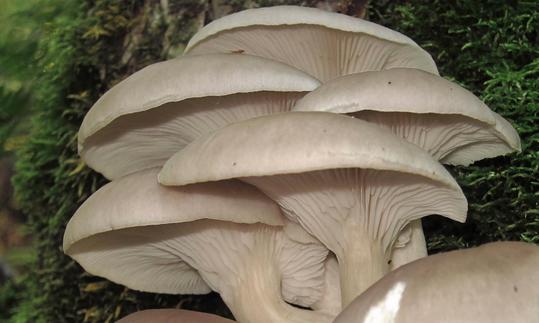

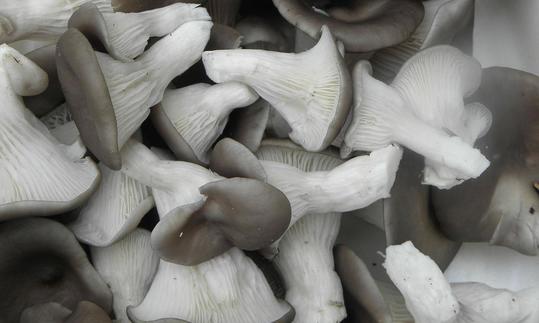

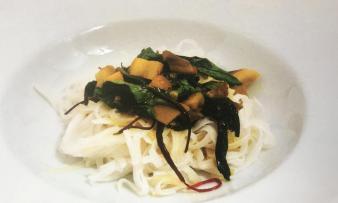
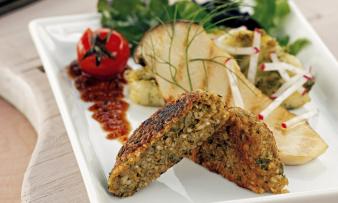
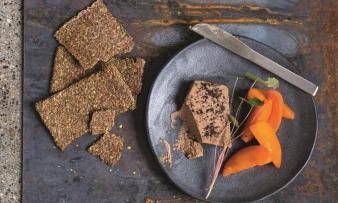
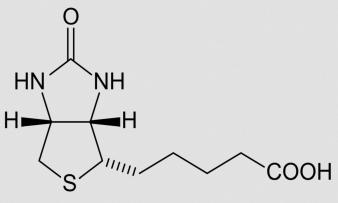
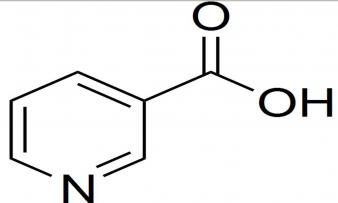



Comments